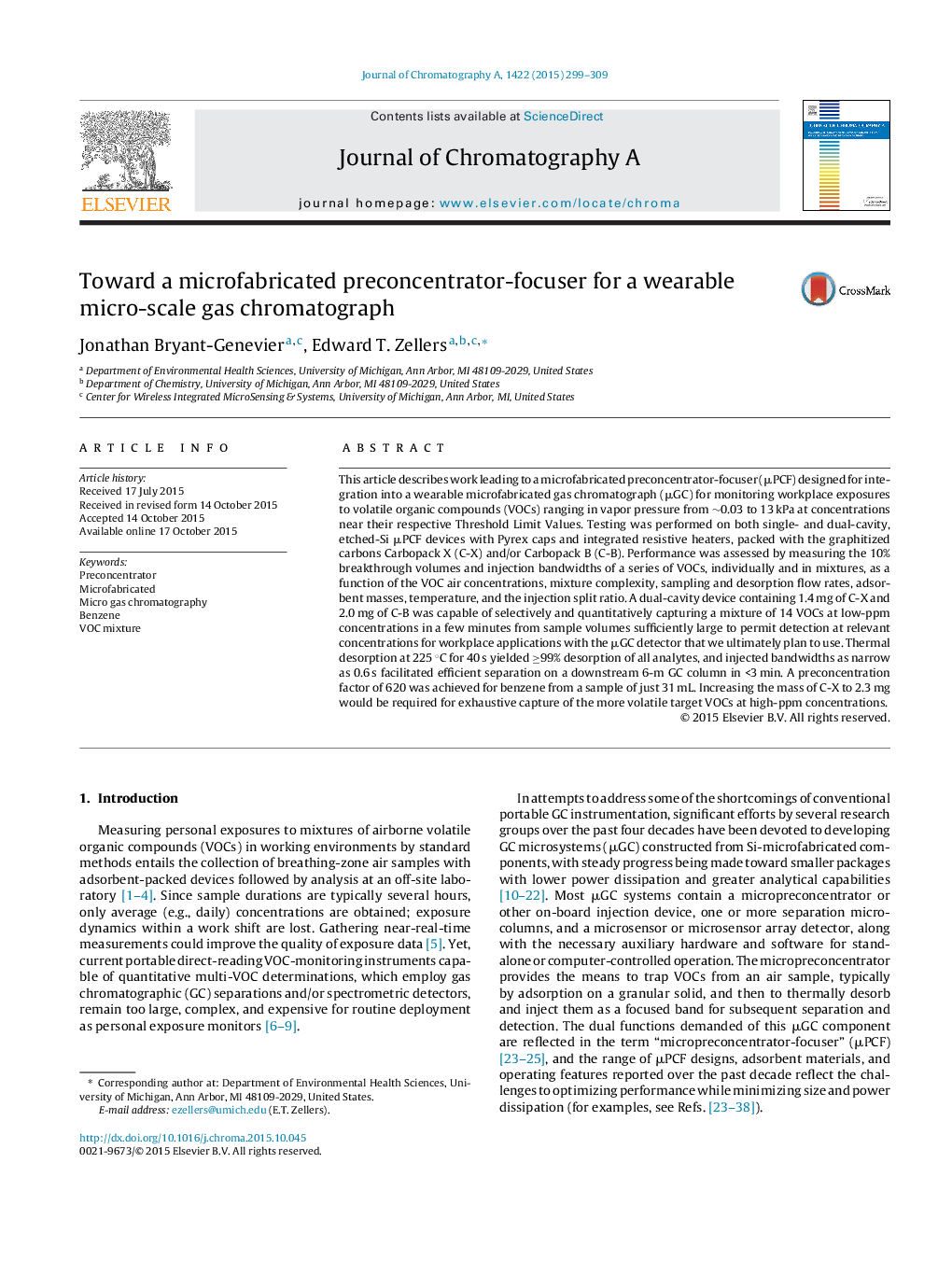| Article ID | Journal | Published Year | Pages | File Type |
|---|---|---|---|---|
| 7611114 | Journal of Chromatography A | 2015 | 11 Pages |
Abstract
This article describes work leading to a microfabricated preconcentrator-focuser (μPCF) designed for integration into a wearable microfabricated gas chromatograph (μGC) for monitoring workplace exposures to volatile organic compounds (VOCs) ranging in vapor pressure from â¼0.03 to 13 kPa at concentrations near their respective Threshold Limit Values. Testing was performed on both single- and dual-cavity, etched-Si μPCF devices with Pyrex caps and integrated resistive heaters, packed with the graphitized carbons Carbopack X (C-X) and/or Carbopack B (C-B). Performance was assessed by measuring the 10% breakthrough volumes and injection bandwidths of a series of VOCs, individually and in mixtures, as a function of the VOC air concentrations, mixture complexity, sampling and desorption flow rates, adsorbent masses, temperature, and the injection split ratio. A dual-cavity device containing 1.4 mg of C-X and 2.0 mg of C-B was capable of selectively and quantitatively capturing a mixture of 14 VOCs at low-ppm concentrations in a few minutes from sample volumes sufficiently large to permit detection at relevant concentrations for workplace applications with the μGC detector that we ultimately plan to use. Thermal desorption at 225 °C for 40 s yielded â¥99% desorption of all analytes, and injected bandwidths as narrow as 0.6 s facilitated efficient separation on a downstream 6-m GC column in <3 min. A preconcentration factor of 620 was achieved for benzene from a sample of just 31 mL. Increasing the mass of C-X to 2.3 mg would be required for exhaustive capture of the more volatile target VOCs at high-ppm concentrations.
Related Topics
Physical Sciences and Engineering
Chemistry
Analytical Chemistry
Authors
Jonathan Bryant-Genevier, Edward T. Zellers,
